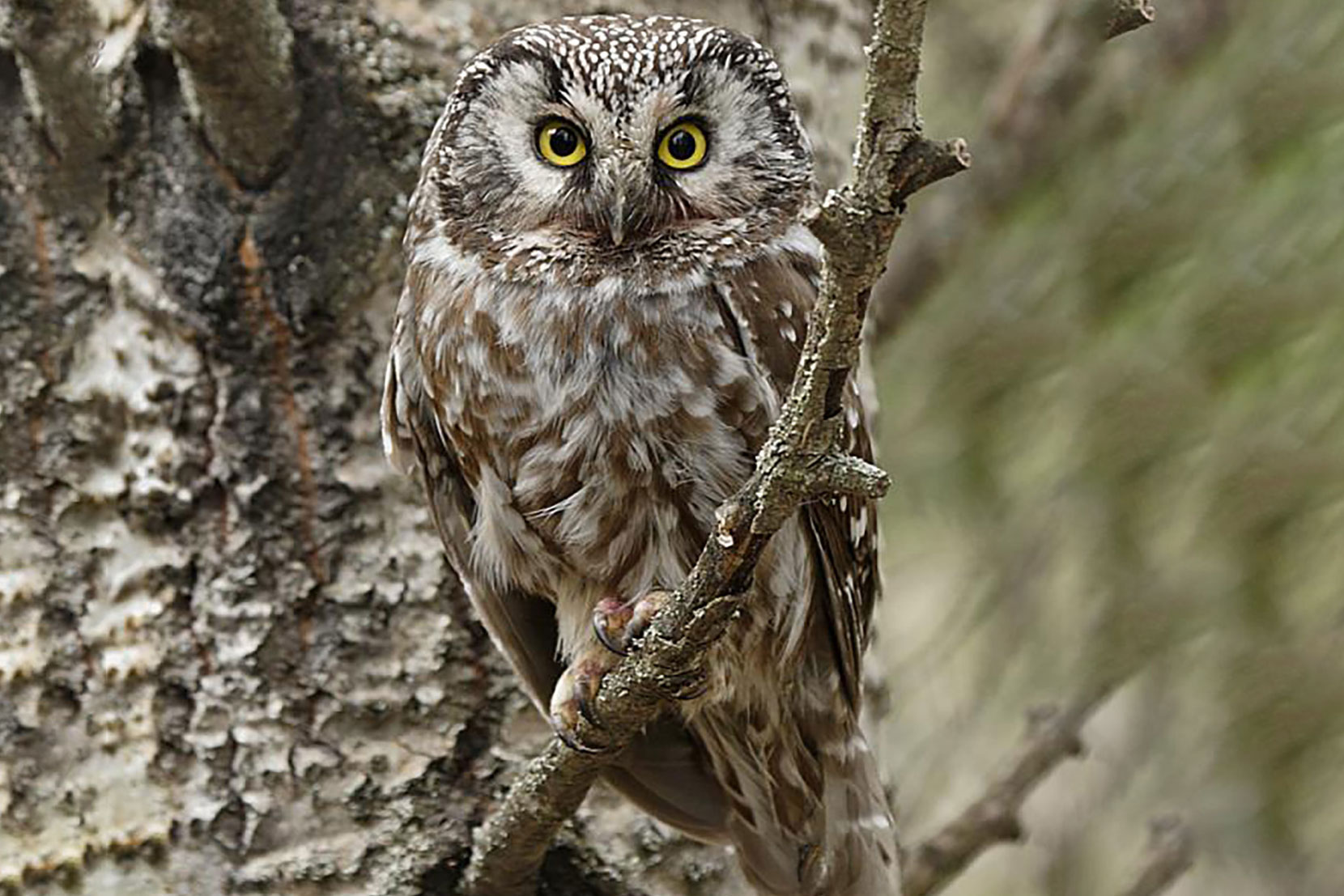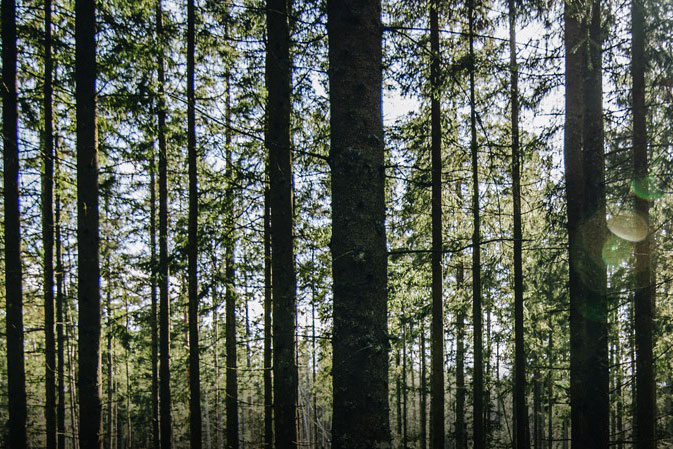This elusive owl is poorly studied in North America and its response to forest management is not well-understood.
Boreal Owl
(Aegolius funereus)
Habitat Ecology
- Boreal Owls occupy a wide range of habitats within the boreal forest,1 but are mainly associated with old forest features including large downed logs, tall canopies, tall snags, and large-diameter trees for singing and nesting.2
- In Finland, old forests (>80 years) were most important for this species, potentially due to increased prey and/or shelter from predators.3
- Nest boxes in spruce forest and <200 m from agricultural fields had higher breeding success in Finland,4 while in Alberta Boreal Owls were observed on sites with forest openings, <20% grassland cover within the home range, and low amounts of “soft” (e.g., vegetated) linear disturbance.5
- This species is a secondary cavity nester and nests mainly in old Pileated Woodpecker (and occasionally in Northern Flicker) cavities.6
Response to Forest Management
- Declines of old (i.e., >80–100 years) coniferous forests are considered the main reason for observed Boreal Owl population declines. Reduced old forest cover has been associated with lower winter survival, reproductive success, prey densities, shelter from predators, and nest tree availability.1,4
- Boreal Owls have shown some tolerance to landscapes with a high proportion of clearcut areas, possibly due to high abundances of voles within clearcuts.7
- In a nest-box study with low sample size (4 nest Boreal Owl pairs) in a 17 years postharvest study area, Boreal Owls nested exclusively in postharvest conifer-dominated (white spruce) stands with at least 50% green-tree retention but predominantly in unharvested forest.5
Stand-level Recommendations
- Retention patches containing veteran trees are expected to contribute to longer-term habitat value by providing a continued supply of old forest habitat features (e.g., large-diameter trees and snags) within regenerating stands.
- Dispersed retention <50% within coniferous stands is not expected to support breeding Boreal Owls, emphasizing the importance of unharvested old forest areas.5 However, further research with larger samples is recommended.
- Nest boxes may be an effective strategy to increase nest availability for this species, however these are likely to provide the greatest benefit in unharvested areas of old coniferous forest.5
- Large-diameter (>35 cm dbh) snags and aspen with cavities, conks or other signs of damage within coniferous retention patches may provide future nesting opportunities as the harvest block approaches maturity.
Landscape-level Recommendations
- The most valuable habitat for Boreal Owls are old coniferous (spruce, pine or fir) forests, however minimum stand sizes required are unknown. Their successful reproduction on landscapes fragmented by clearcutting in Finland suggests the amount of old forest may be more important than size of contiguous reserves at the territory scale (~150–230 ha).4,7
- Managers are encouraged to maintain at least 15–20% old forest cover containing >150 m3/ha of timber at the territory scale within known or potential Boreal Owl habitats.7
- In Alberta, provincial data suggests black spruce, tamarack, and wetlands may be high-value habitats.8 Boreal Owls were more likely to be observed in forests containing openings.5
References
- Hayward, G. D. & Hayward, P. H. 1993. Boreal Owl (Aegolius funereus), version 2.0. in The Birds of North America (Rodewald, P. G., ed.) Cornell Lab of Ornithology, Ithaca, New York, USA. Available online: https://doi.org/10.2173/bna.63
- Herren, V., Anderson, S. H. & Ruggiero, L. E. 1996. Boreal Owl mating habitat in the northwestern United States. Journal of Raptor Research 30: 123–129. Available online: https://sora-unm.edu/sites/default/files/journals/jrr/v030n03/p00123-p00…
- Korpimäki, E. & Hakkarainen, H. 2012. Old forests increase survival and lifetime reproductive success. Pages 252–259 in The Boreal Owl: Ecology, Behaviour and Conservation of a Forest-Dwelling Predator 252–259. Cambridge University Press, Cambridge, UK.
- Korpimäki, E. & Hakkarainen, H. 2012. The Boreal Owl: Ecology, Behaviour and Conservation of a Forest-Dwelling Predator. Cambridge University Press, Cambridge, UK.
- Domahidi, Z. 2018. Distribution and breeding ecology of boreal and northern saw-whet owls in the Boreal forests of Alberta, Canada. M.Sc. Thesis. Department of Renewable Resources, University of Alberta, Edmonton, AB. 81 pp.
- Hayward, G. D., Hayward, P. H. & Garton, E. O. 1993. Ecology of Boreal Owls in the northern Rocky Mountains, U.S.A. Wildlife Monographs 124: 3–59.
- Hakkarainen, H., Koivunen, V., Korpimiiki, E. & Kurki, S. 1996. Clear-cut areas and breeding success of Tengmalm’s owls Aegolius funereus. Wildlife Biology 2: 253–258. Available online: https://www.researchgate.net/profile/Erkki_Korpimaeki/publication/258361…
- ABMI. 2017. Boreal Owl (Aegolius funereus). ABMI Species Website, version 4.1 Available online: http://species.abmi.ca/pages/species/birds/BorealOwl.html








